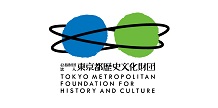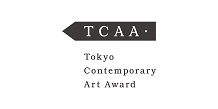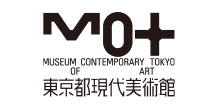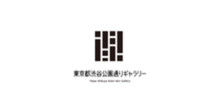【TOKAS Hongo】Announcement of successful candidates for OPEN SITE 5

OPEN SITE is a program aimed at creating a platform that brings together a full range of projects seeking to create new forms of expression across all genres, open to society. In this fourth season, we had 161 applications from Japan and overseas, and 9 projects were selected after rigorous review. These projects will be implemented including the TOKAS recommendation program and educational programs from November 2020 to February 2021.
Execution Projects
Exhibition
Part 1|2020/11/21 (Sat) - 12/20 (Sun)
Name OIWA Euske
Title Vacances
Name GOMPEI Chihiro+MORIOKA Miki
Title Until I hear my voice
Part 2|2021/1/9 (Sat) - 2/7 (Sun)
Name KAMIMURA Yoichi, KUROSAWA Seiha, TAKAGI Yuu
Title Floating Between the Tropical and Glacial Zones
Name IINUMA Tamami
Title The Language of a House Architectural Photography of Koji Taki
Performance
Part 2|2021/1/11 (Mon) - 1/17 (Sun)
Name Doubustuenzoo(Aokid)
Title Doubustuenzoo 2016~2020 in TOKAS
Performer Aokid, Takumichan, YONEZAWA Ippei, HAMADA Miri, PAKU Kenyu, TAKEDA Ryu etc.
Part 2|2021/1/26 (Tue) - 1/31 (Sun)
Name buru-egonaku(ANASAKO Shinichi)
Title COINCIDE
Performer buru-egonaku etc.
Part 2|2021/2/2 (Tue) - 2/7 (Sun)
Name y/n(HASHIMOTO Kiyoshi)
Title Sex/Work/Art(tentative title)
Performer HASHIMOTO Kiyoshi, YAMAZAKI Kenta
dot
Part 1|2020/11/23 (Mon) - 11/29 (Sun)
Name Pareidolian (KANEGAE Oriyo)
Title A concert without audience; The Tripped "Composition, Performance, and Appreciation"
Performer YAMAMOTO Kazutomo, MASAKI Kouji, KANEGAE Oriyo
Part 1|2020/12/15 (Tue) - 12/20 (Sun)
Name Back and Forth Collective(TAKI Asako)
Title Women in Acts / Lives / Customs(Tantative)
Performer SAKAMOTO Natsumi, TAKI Asako, HOMMA Mei
TOKAS program
Part 1|2020/12/1(Tue)- 12/13(Sun)
Name Chloë DELANGHE(Belgium)
Title Minnebrieven (Love letters)
Application Overview
| Application period | March 3 (Tue) – March 24 (Tue), 2020 |
|---|---|
| Total number of applications | 161 |
| Jury members | KOBAYASHI Haruo (Director, blanClass) HATANAKA Minoru (Chief Curator, NTT InterCommunication Center [ICC]) HISANO Atsuko (Program Director, The Saison Foundation) KONDO Yuki (Program Director, Tokyo Arts and Space) |
Jury Member's Reviews
■KOBAYASHI Haruo (Director, blanClass)
This was my first time serving as a judge for the OPEN SITE competition, and with such diverse and ambitious projects, I felt I wanted to offer opportunities to all applicants. The judging process itself was difficult, and due to countermeasures against the spread of COVID-19 there were various challenges, such as holding the interviews for the second-stage examination remotely, which had me feeling troubled the entire time. My overall impression was that many projects conveyed a struggle to determine the format and background of each applicant’s work, while also wrestling with dilemmas over how to deal with contemporary society and its issues, and over whether addressing these is in itself a sufficient task for art. In this context it was the projects that featured unusual and unprecedented subjects, approaches, and methods that were eventually selected. When the projects are actually held, COVID-19 countermeasures will still be in place, and the applicants will have to make various adjustments in order to present their work. My hope is that this process, too, will illuminate the particular significance of this edition of OPEN SITE.
■HATANAKA Minoru (Chief Curator, NTT InterCommunication Center [ICC])
For this year’s OPEN SITE, applications were accepted in the midst of the COVID-19 crisis, with a large number of museums temporarily closed in Tokyo and elsewhere. This must have had a considerable impact on the applications submitted. Under these circumstances, the applicants, organizers, judges, and all other parties concerned must have been wondering constantly about the conditions under which the competition would be held, and of course this must have affected not only the practical aspects of conducting the program but also the content of applications. At the same time, many projects dealt with current issues besides the crisis immediately at hand. In recent years, it has become more and more common for art to provoke thought about potential ideas to address our present situation by adopting innovative approaches or re-examining institutional structures and historical events. In this context, my personal benchmark for evaluation was the effectiveness with which projects were realized. As a result, the projects selected were widely varied, in terms of both their ideas and their approaches to realization.
■HISANO Atsuko (Program Director, The Saison Foundation)
The acceptance of applications for this year’s OPEN SITE coincided with the spread of COVID-19. This obviously affected applicants’ thinking about the issues they would deal with, and made it difficult to formulate their proposals, and the screening process was a challenge as well. Over the course of a month, from the deadline for application submission until the day the judges met to reach decisions, the situation changed daily and it seemed that conventional criteria did not apply.
Issues addressed in the applications, such as immigration, gender, identity, climate change, ecology, vulnerable people, mobility, and disasters, could not be discussed without referencing the virus. Under these unpredictable circumstances, it was difficult to consider issues of flexibility, feasibility of ideas submitted, and means of exhibiting or showing works.
Artists are once again being faced with the question of what art can do in a time of crisis. The selected artists have had to make drastic changes since submitting their applications, and they will continue to face moment-to-moment changes in society while exploring their ideas even more deeply and engaging in a process of trial and error. I look forward to seeing the outcomes of this process in the works exhibited and shown.
■KONDO Yuki (Program Director, Tokyo Arts and Space)
For this year’s OPEN SITE, in the end only applications from within Japan were selected. This was by no means a decision made in light of the current situation and the outlook several months down the road, but I believe that in a different way, the uncertainty surrounding us significantly affected the process of evaluating both the content and the form of projects. Nonetheless the applications selected, from projects focused on local issues to those with a trans-border perspective, were ones that sought insights from diverse perspectives even in a closed-off world. Much of contemporary art responds in some way to current events, but this does not mean superficially reacting to one’s immediate surroundings in the present moment, but rather absorbing and digesting these while ceaselessly asking a range of questions. During the screening, I gained a renewed sense that it is the practice of making, viewing, and interpreting art that can offer us something solid and definite in uncertain times.







